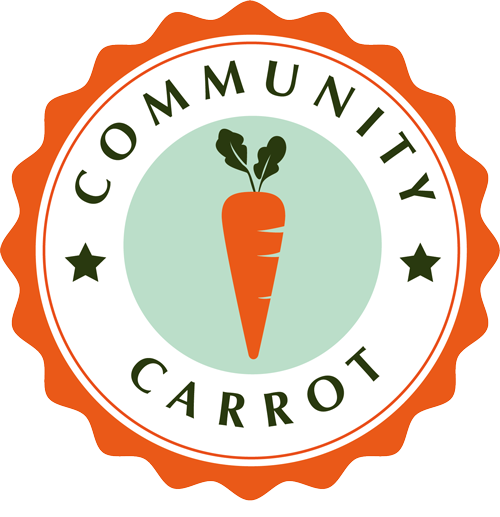KidsFoodJourney Week 3: Wands and Pirate Ships; Planting Cress and Beans; Who Am I?
Week 3
P2 - 4 (Year 1 - 3) Home Lesson Plan
Wands and Pirate Ships; Planting Cress and Beans; Who Am I?
Before starting these activities please read this introduction to KidsFoodJourney, and also the course aims & core concepts outlined in Week 1’s lesson plan.
Lesson Outline
Tiny Tastes
Snacktivity: Wands and pirate ships
Sow cress and bean seeds
Who am I? game
Story-time
Tiny Tastes
We start the lesson with our no-pressure Tiny Tastes experiment: a repetition of the food we tried in week 1. Whether the children want to simply smell it, just lick it, or are happy to eat (any quantity of) the food – that’s fine. Whatever they go for, can they describe what it’s like this time? How does it smell? If they taste it, do they like it better than last time? Does it taste different to them this time? Does it taste more familiar?
Snack-Time Activity: Edible Fairy Wands and Pirate Ships
These are great fun, and look really effective. The wands are a good option for kids’ party food too.
Excuse my extremely basic artwork! The long sticks in the wand and the ‘mast’ are wooden skewers, and the short stick holding the ‘pirate’ together is a toothpick. We use cookie cutters for the star shape, but it’s easy to cut with a knife. These pictures are suggestions, if they want to use their imagination to change things about of course that’s fine! Heart cookie cutters look good for the wand too.
I use a firm melon for the ‘boat’ (e.g. galia, cantaloupe, honeydew) and a watermelon for the ‘sail’. Make sure you slice straight down through the watermelon, like you’re slicing bread, to get large enough sheets to cut shapes out of. You could of course use other berries for the wand: blueberries or strawberries would work well.
Planting Cress
We plant cress in this lesson to allow two weeks to pass for it to grow large enough to use in our egg mayonnaise snack in week 5.
I use plastic berry tubs to plant cress in during workshops – you can use any plastic tub, just make sure it doesn’t have holes in the bottom.
Line the tub with a couple of sheets of folded kitchen paper, then wet it. Sprinkle a generous amount of cress seeds over. Leave on a sunny window-ledge, and keep the paper moist. You should see the seeds germinate in a couple of days, and in two weeks you will have a good crop to harvest.
Beans in a Bottle
This is a great way to show children the structure and life-cycle of a plant as you can watch the bean germinate, the roots grow and the stem and leaves unfurl.
You can use any bean for this – broad beans, runner beans etc.
Cut the top off a clear plastic bottle, remove the label and fill it with cotton wool – at least 10cm full. Slide a bean down the side, so you can see it through the plastic, and then water until all the cotton wool is soaked.
Keep in it a sunny place, keeping the cotton wool moist. After about three days you should see the bean start to germinate, sprouting roots and the stem begin to appear at the top. You’ll be able to see this all happen through the plastic. When the beans have grown tall enough – about 10 days to 2 weeks – you can plant them outside for them to keep growing, and you might be able to eat your own home-grown beans before too long!
Who Am I?
We’ve re-purposed this party game to get kids thinking about fruit and vegetables. It’s very simple: write the name of a fruit or veg on a sticker, and stick it on their forehead. They have to ask ‘yes or no’ questions until they guess what they are. It’s a fun way to get them thinking about what foods look like, taste like, feel like – they have to get descriptive to guess who they are. At home, you could make this more interactive by linking it to their meals: they are guessing what fruit and vegetables they’ll be eating later!
A story to finish
We are so lucky at KFJ to have a professional storyteller among our staff. Chris ends every session with an energetic, sometimes musical, always hilarious story about food. Here he is telling the story of the three wishes and the sausage.
We have found the children don’t grow out of loving this – if anything the older ones are even more engaged. We tell a story at the end of KFJ sessions from ages 4 – 11, and they all love them. You don’t have to be a professional to tell the story, just make sure it’s ‘on message’, and not one that teaches children that sweets and cakes are great fun while broccoli is a chore! Be careful also about stories that focus on weight, or sort foods into black and white ‘healthy/unhealthy’ categories. We never talk about weight in KFJ, and avoid telling children that certain foods are better or worse than others. We’re trying to widen their tasting horizons and place a range of foods on a more level playing field for children to learn to genuinely enjoy eating a varied diet.
Kit List:
Your chosen Tiny Tastes food
Wooden skewers
Toothpicks
Shaped cookie cutters
Grapes
Watermelon
Other firm melon
Banana
Plastic tubs / trays for cress seeds
Cress seeds and beans
Plastic water bottle
Cotton wool
Sticky labels



